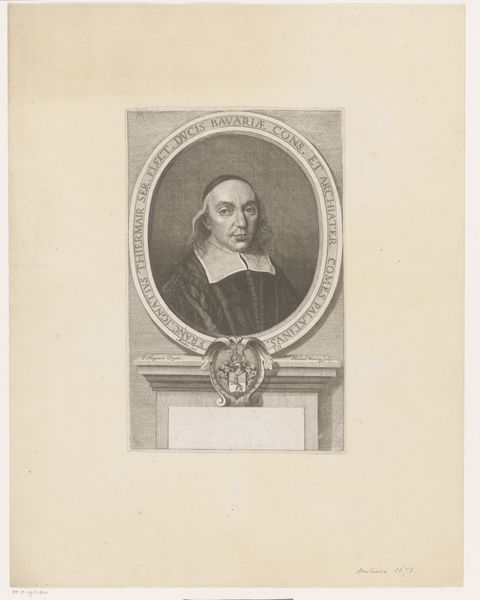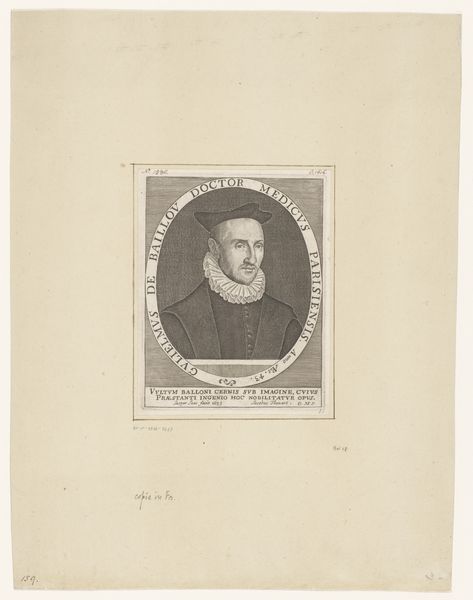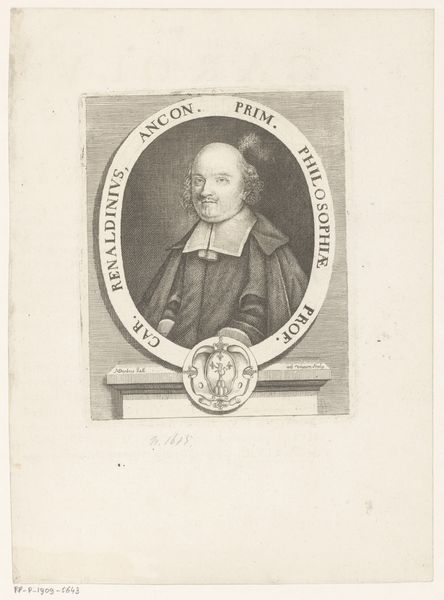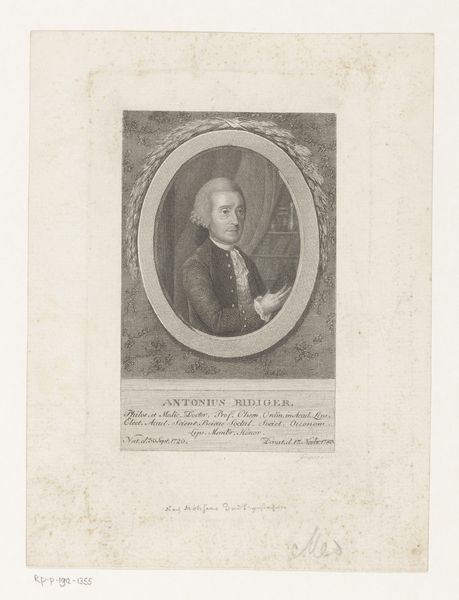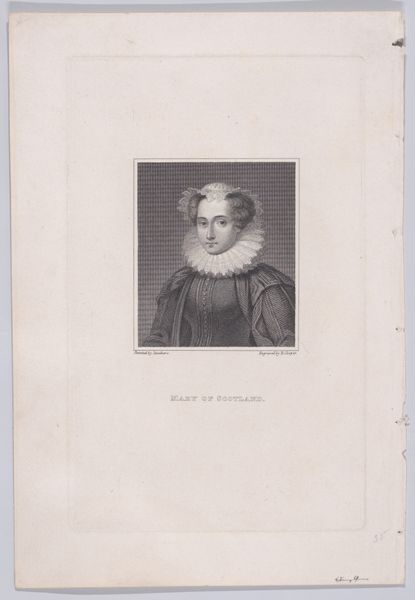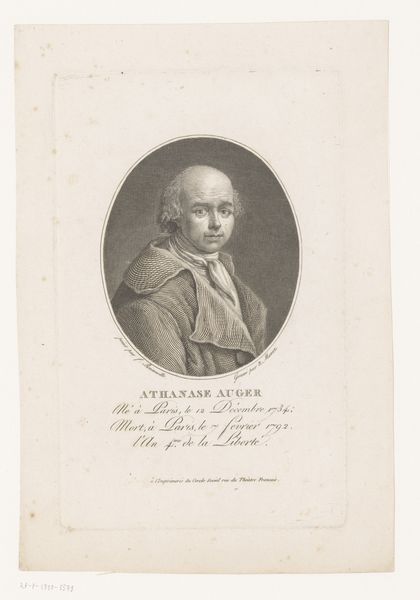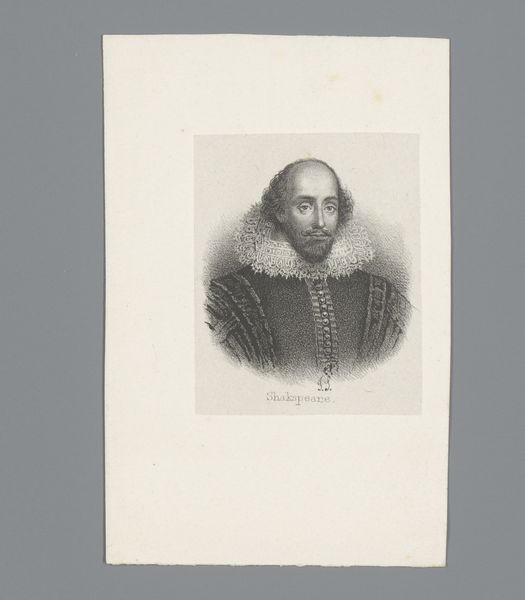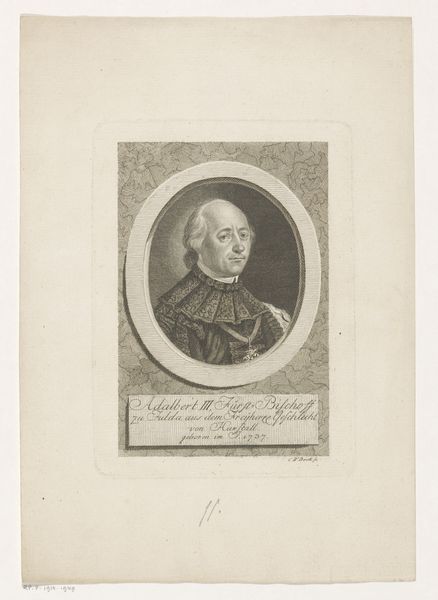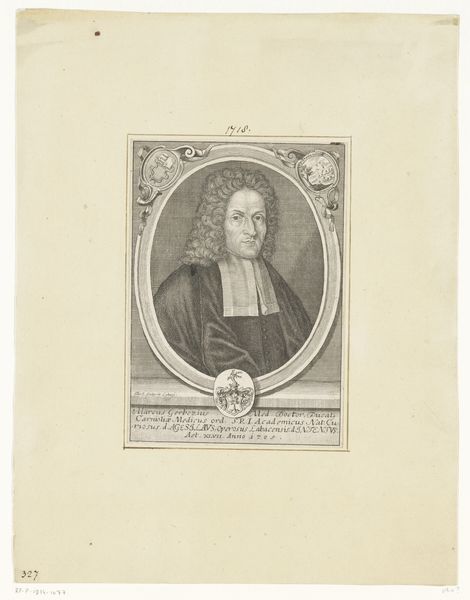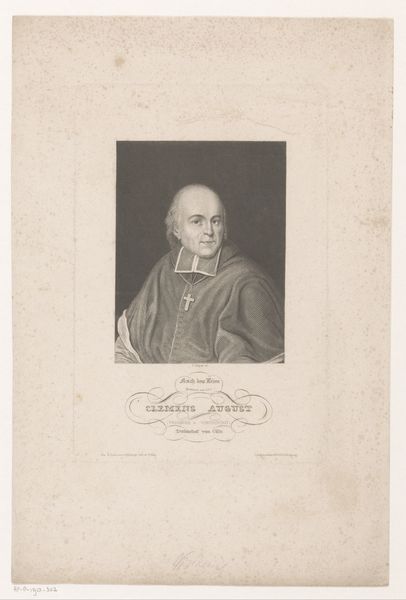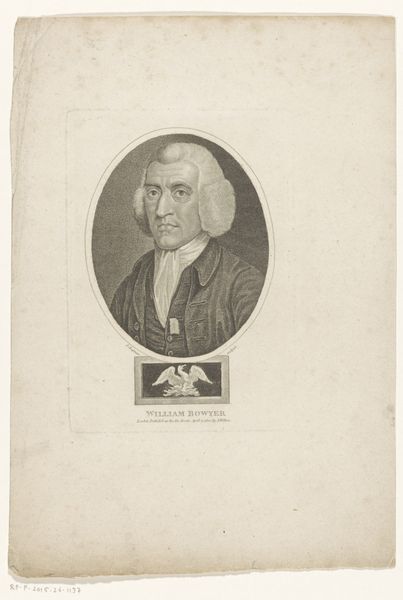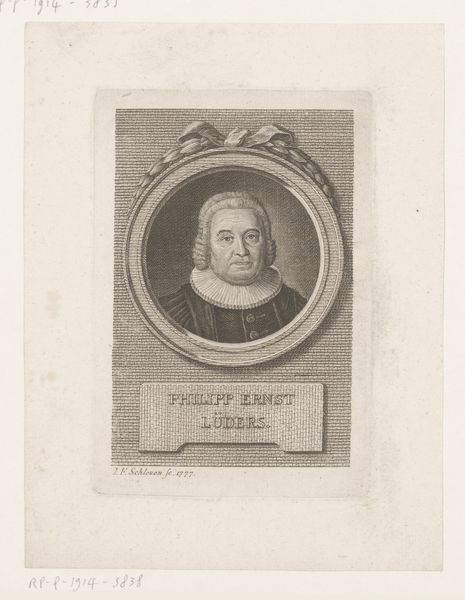
drawing, print, graphite, engraving
#
portrait
#
drawing
# print
#
romanticism
#
graphite
#
history-painting
#
engraving
Dimensions: Chine collé: 10 1/16 × 6 7/8 in. (25.6 × 17.5 cm) Plate: 10 1/4 × 7 1/16 in. (26.1 × 17.9 cm) Sheet: 11 13/16 × 8 5/8 in. (30 × 21.9 cm)
Copyright: Public Domain
Editor: We are looking at a print of William Shakespeare created in 1827 by Charles Picart. It's a portrait, crafted using graphite and engraving. The detail in the rendering of Shakespeare's face and clothing is remarkable. How do you interpret the artist’s choices in the composition of this piece? Curator: The engraving presents a meticulous balance. Note the stark contrast between the light illuminating Shakespeare’s face and the darker tones of his doublet, which immediately draws the eye. Observe how Picart utilizes line and texture to define the contours of the face, capturing an idealized form through neoclassical precision combined with emerging romantic sensibilities. Editor: So, the use of light and shadow creates a focal point. Does that signify something? Curator: It invites scrutiny. The artist’s decision to frame the face so centrally, allowing for an interplay between realism and the Romantic ideal, establishes an interesting tension. Consider the materiality, the linear qualities of engraving cross-hatching to shape tone, to simulate depth… It invites close inspection of Shakespeare's expression as much as his iconic ruff. The composition achieves an idealized representation through almost mechanical yet extremely controlled reproduction. Editor: That’s interesting. I hadn’t thought about it in terms of idealization versus representation. Is the romantic ideal separate from the actual material qualities? Curator: Not entirely, because Picart's Romantic ideal is dependent on sharp clarity of line to create an emotional, almost mythic likeness. Both depend on each other. Through subtle graduation, the lines establish mood; the ideal is made manifest via the reproducible, material properties of engraving itself. Editor: I see. It's about the relationship between technique and visual impact. Thanks for helping me to look beyond just the surface! Curator: Precisely! The material itself is fundamental to conveying meaning and mood. An understanding of form grants insight beyond iconographic assumptions.
Comments
No comments
Be the first to comment and join the conversation on the ultimate creative platform.

